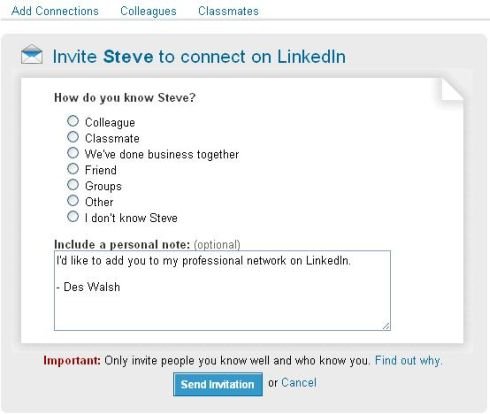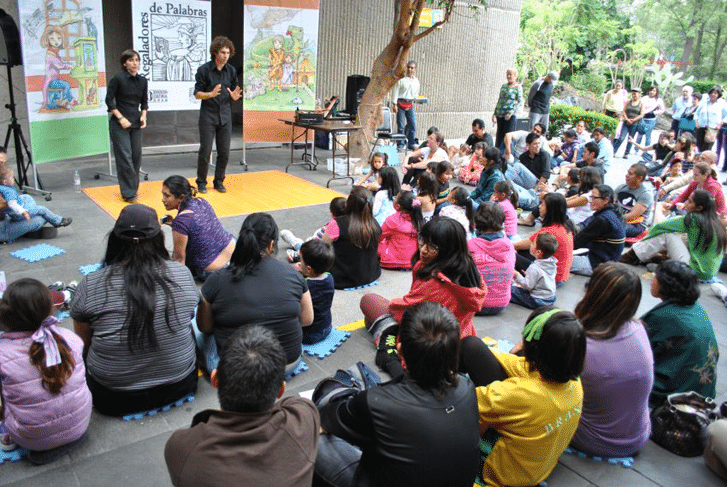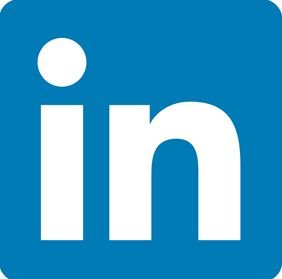How Much Do You Want People to Join Your LinkedIn Network?
Why it makes sense to personalize your invitations to connect on LinkedIn
When I decided after Christmas that I wanted to have a clear inbox on LinkedIn before the New Year arrived, I clearly underestimated the scope of the task.
I finished up spending the better part of a day sorting it all out, dealing with a lot of Pending items, including invitations, from people whose names I had not recognized at the time, or where I had not grasped at the time what our professional connection might be.
Typically, those Pending invitations had used the standard, boilerplate one-liner provided by LinkedIn, the very blunt “I’d like to add you to my professional network on LinkedIn”.
I knew that some, maybe most, would be from people who were simply trying to build as big a list of connections as they could and as fast as possible. But for both social and professional reasons I did not want to consign them all to the archive without checking to see if there was the possibility of a mutually useful connection.

I firmly believe that, if you want to build your professional network on LinkedIn, you should take the trouble to personalize your invitations and not rely on the boilerplate invitation. I also believe that it makes sense to apply the advice of LinkedIn to only connect with people we know and trust. It is a professional network after all.
That one-liner is almost certainly not going to be a problem for your closest professional colleagues and connections, especially if you are new to LinkedIn and they know that.
It could well be a problem for people who don’t know you so well and – hold the ego – might not actually remember you, or remember you enough, at the time of opening the email. If they don’t recognize your name instantly and also know and trust you well enough to accept your invitation unhesitatingly, then some other things could happen, none of them in your interest.
Of the five ways people can respond, including the one you want, “Accept”, the most risky, and the one you really don’t want is “I don’t know” – run up a few of those (five, last time I heard) and LinkedIn will tag you as a spammer: also, you won’t be able to invite again any of the people who chose that option.
By the way, there are plenty who would disagree with my views on this topic, including some close friends and colleagues. I think the protagonists on both sides of the “quality versus quantity” debate on this subject both got tired of the debate a couple of years ago. If you are interested in reading more about that, a Google search on something like “LinkedIn quality vs quantity” will bring up a number of posts from here and there, such as this nicely argued one from Valerie Gonyea: she, like me, is on the “less is more” side of the debate, but sets out the other side’s approach in what seems a fairly clear way.
Back to my day of sorting my LinkedIn inbox.
Some requests were for introductions to other LinkedIn members and where I was not sure that I had dealt with those at the time (LinkedIn’s internal mail management tools are not user-friendly) I sent messages asking how things had worked out and whether at this stage there was any way I could be of help. There were also some inviting me to join LinkedIn groups and I responded to those as appropriate.
The other messages were those pending “one-liner” invitations to connect networks. There were about twenty five of those.
To them I sent a message using variations of the following text explaining my approach to connecting on LinkedIn and inviting conversation (the original version of the text was shared with me by LinkedIn veteran expert Scott Allen a few years ago – although I take full responsibility for what I have done to the original text):
Thanks for inviting me to connect on LinkedIn. I would love to start a dialogue, get to know each other and find out how we might be of service to each other. Feel free to email me at deswalsh@gmail.com and we can get started.
I should explain that I use LinkedIn as they recommend and I find I can manage in a more mutually effective way, and I only connect (create a permanent referral link) with people I know well professionally. In most cases that means we have worked on some kind of project together or have communicated fairly extensively on social networks. At least I like to have had a chat, via Skype (my ID there is deswalsh), so I hope you will feel free to connect there.
If that all works for you, I look forward to hearing from you. In any event, I wish you a very happy and prosperous New Year.
As I say, I sent out about twenty five of those. I stopped when I got back to invitations from mid 2008, figuring that for any before that date (and even some more recent) the inviter will most likely have no recollection of ever having invited me to connect. That was a couple of days ago. I’ve had two responses, and have exchanged interesting emails with those. So far I’ve had no abusive responses, although I have had one or two “how dare you!” type responses when I’ve done this in the past.
Two out of twenty five? Was it worth it? Well, both are interesting people and took the trouble to reply very professionally. I feel good about being connected with them.
Do you have interesting LinkedIn invitation experiences to share, or tips?
Des Walsh
Business coach and digital entrepreneur. With coach training from Coachville.com and its Graduate School of Coaching, and a founding member of the International Association of Coaching, Des has been coaching business owners and entrepreneurs for the past 20 years. Over the same period he has also been actively engaged in promoting the business opportunities of the digital economy. He is a certified Neurolinguistic Programming (NLP) coach, and a certified specialist in social media strategy and affiliate marketing.


One Comment
Comments are closed.